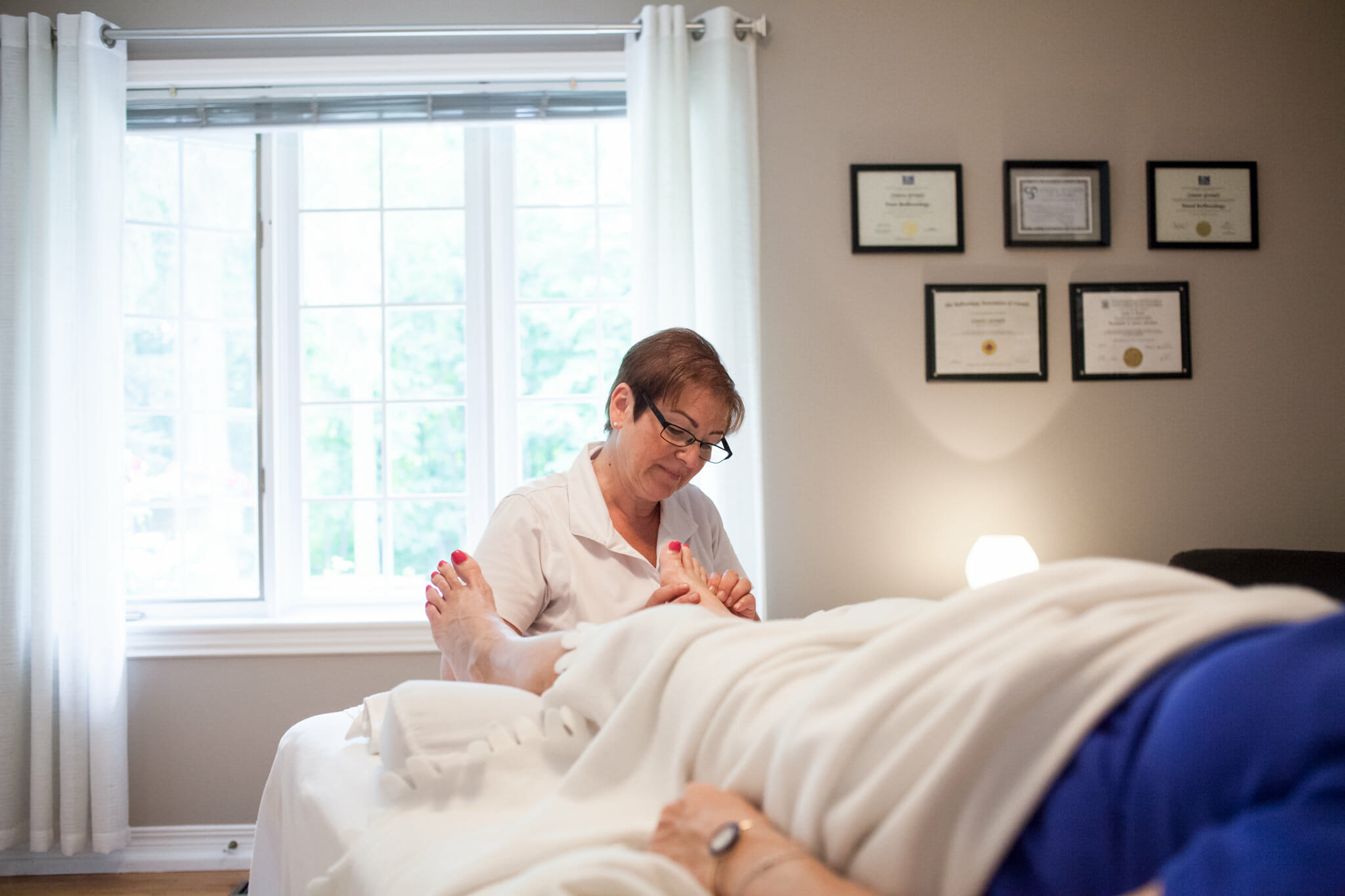A reflexology treatment begins with a short consultation to determine the best course of action for the session.
Although a basic treatment is approximately one hour in length, sessions can vary depending on the services requested and specific conditions. Reflexologists will verbalize the nature of the treatment being offered providing clients with an understanding of the benefit of their reflexology treatment. Afterward, people feel relaxed, calm and even sleepy. Typical detox symptoms might be experienced as the body rids itself of toxins and activates its natural healing powers.






